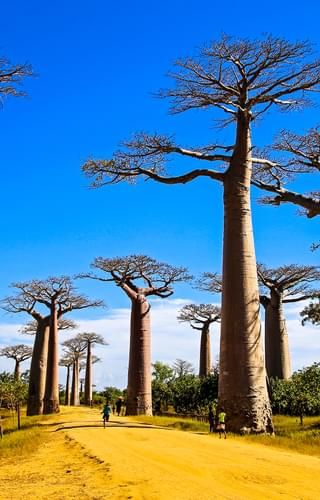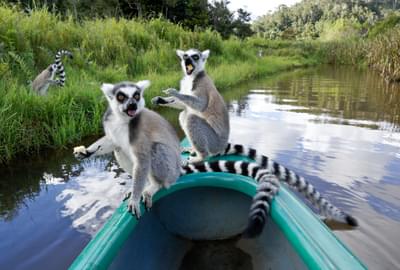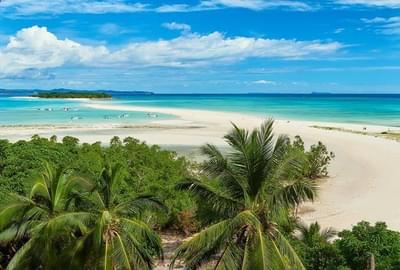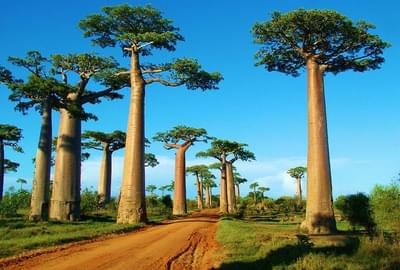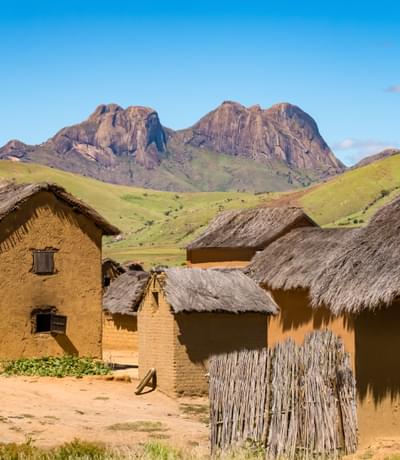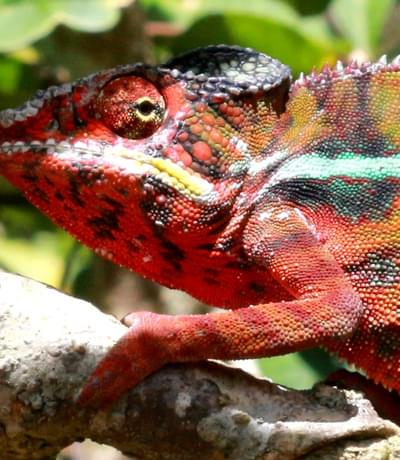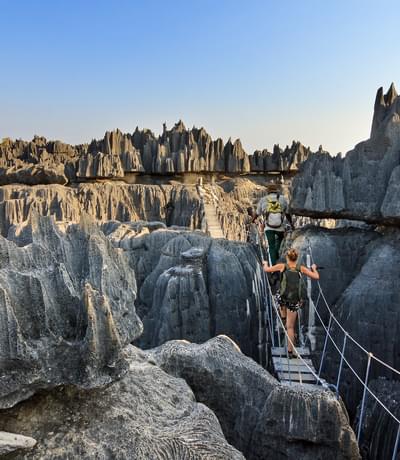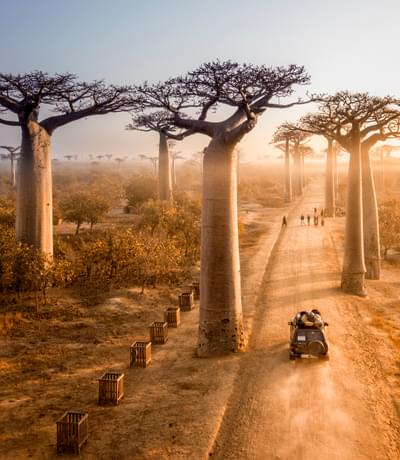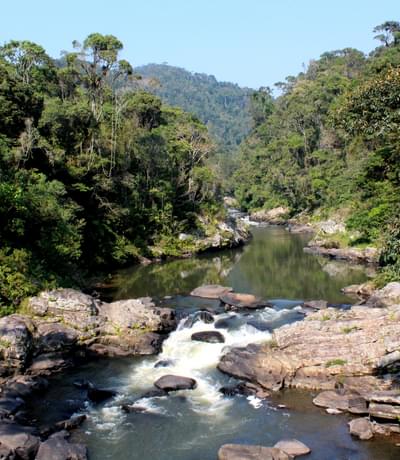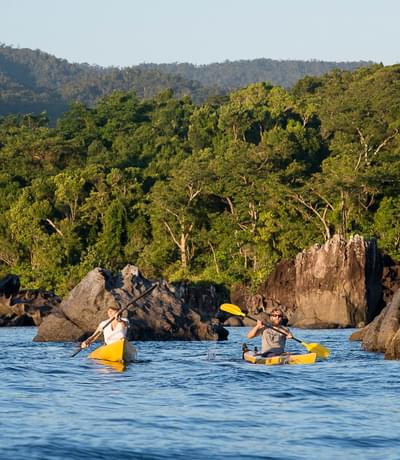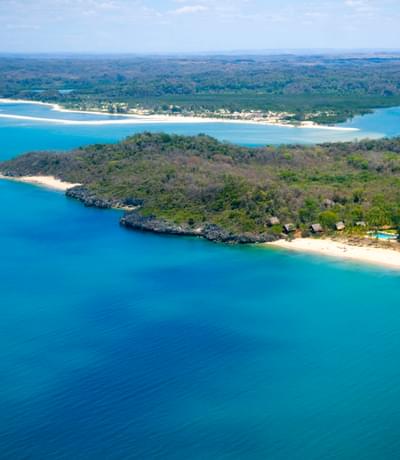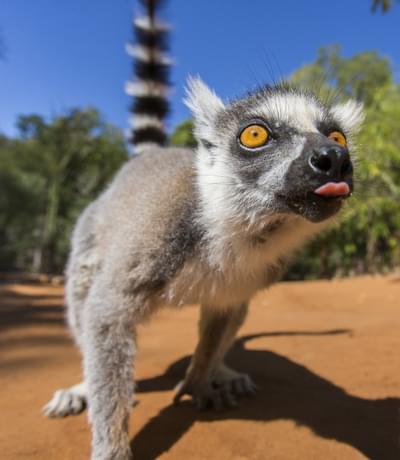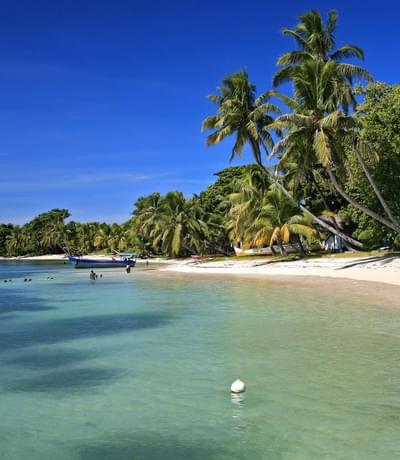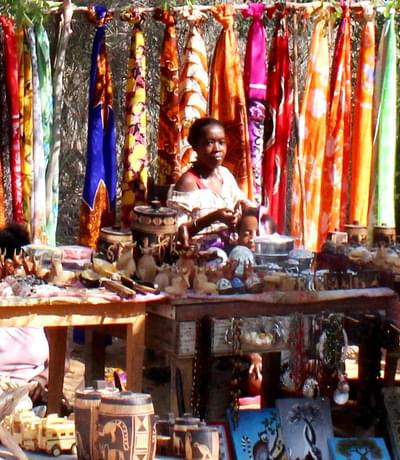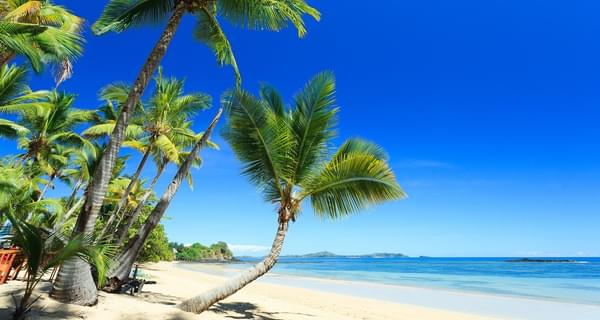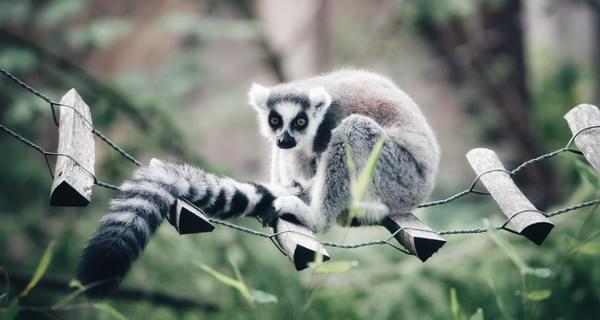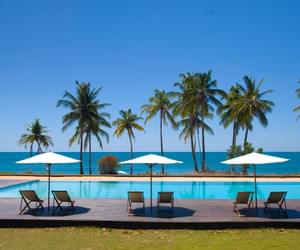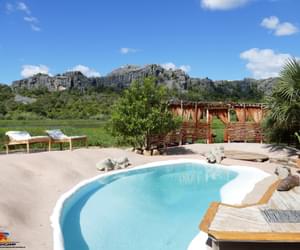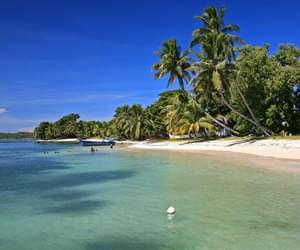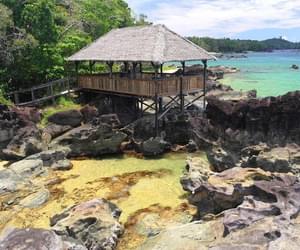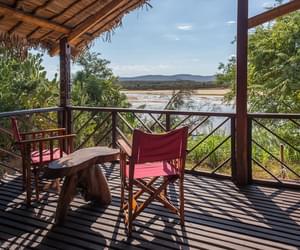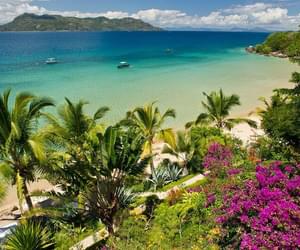A wildlife haven like no other.
Immerse yourself in the wonders of the Lost World with the UK's leading experts on a luxury Madagascar tour.
Variously described as the Lost World, a World Apart and the Land that Time Forgot, Madagascar is a mysterious and compelling destination, offering everything from intrepid expeditions in the mountains to relaxing luxury honeymoons on the beach. The landscape on the world’s fourth largest island varies from rainforest and coral reefs, to desert and high plateau, with the coast enjoying a tropical climate whilst inland it’s more temperate, and even arid in the south.
With an incredible diversity of fauna and flora that is found nowhere else on earth, Madagascar is a veritable paradise for naturalists and wildlife enthusiasts. Or just anyone who wants to see a lemur in the wild! Thanks to the island’s geographical isolation, over 90% of species here are endemic, including six different types of Baobab tree, more than 100 subspecies of lemur, 115 bird species, and over half of the world’s chameleons. If you’re looking to meet weird and wonderful creatures, a tailor made Madagascar holiday is what you need!
Madagascar has 1,800 miles of beautiful beaches, palm-fringed shoreline, numerous offshore islands and coral reefs that provide wonderful snorkelling and diving. There are numerous luxury beach lodges ideal for honeymooners as well as families, and anyone looking for an idyllic island paradise holiday.
For a mind-boggling smorgasbord of spectacular geological formations, head to the sandstone massif of Isalo; check out the famous ‘tsingy’ limestone plateaux of Ankarana and Bemaraha; or visit the towering granite domes of imposing mountains such as Andringitra and Marojejy.
Officially the country shares one language and culture, yet there are in fact 18 tribes with territorial divisions based on old kingdoms rather than ethnic differences. Most Malagasy people are of dual Indonesian and African origin, and their language has its roots in the ancient Malayo-Polynesian tongue.
Taking a luxury Madagascar tour is a unique and hugely rewarding adventure, but visitors should be aware that accommodation in certain areas can be basic, roads can be very bumpy and delays tend to occur, more often than in most African countries. But really, that’s just all part of the adventure.
OUR FAVOURITE TAILOR-MADE MADAGASCAR TRIPS
Unique Madagascar Holiday Ideas
Where would you like to go on holiday in Madagascar?
Best Places to Visit in Madagascar
Far & Wild Customer Reviews
See what our customers have to day about us... Read all reviewsWHAT WOULD YOU LIKE TO DO IN MADAGASCAR?
Explore our Different Types of Madagascar Holiday
When to go to Madagascar
Find out the best time to visit Madagascar with our month by month guide.
- Best
- Good
- Mixed
- Jan
- Feb
- Mar
- Apr
- May
- Jun
- Jul
- Aug
- Sep
- Oct
- Nov
- Dec
January
The cyclone season in Madagascar is between January and March, which means it's hot and wet and isn't the best time of year to travel. The east coast is generally wetter than the west or south.
February
February is the wettest month, with heavy downpours and the risk of cyclones making travel difficult, and wildlife hard to spot.
March
March remains hot and wet, with high humidity making travel uncomfortable. The south is generally a bit drier and the roads more manageable than the north.
April
There are still heavy rain showers during April, May and June, but they don't disrupt too many activities, and the sun often shines in between. Parks are now open to visitors and it's a great time to visit Andasibe and Berenty, with the greenery lush and the wildlife coming out of hiding.
May
The rains have left the landscapes looking green and lush, and now is a great time to try and spot the famous lemurs. The tourists haven't yet arrived en-masse so accommodation is cheaper and easier to find. There are still a few rain showers, but sun prevails, making May an excellent overall choice for travel.
June
With the rain finally subsiding, the air becomes fresh and cool, with sunshine and just a few showers punctuating the day. It's a great time to travel across much of the country, and still outside of peak season it's easier to find accommodation at good prices.
July
July is the beginning of the peak season, with dry weather and lower temperatures meaning this is a great time to go trekking or explore the rainforests. Lemurs and other forest dwellers have come out of hiding, and humpback whales gather to calve offshore, with sightings frequent between now and September. July is one of the best times to visit Madagascar.
August
August is similar to July, with comfortably cool temperatures and sunny skies. It's another good month for whale watching, and for exploring Madagascar's many regions.
September
Want to see a baby lemur? Now is the time to visit, when lemurs give birth. The cooler weather is at an end, and temperatures begin to rise, bringing with them a few showers in anticipation of the approaching rainy season. It's quieter than July and August, and therefore an ideal month to visit Madagascar. Whale watching is still on the cards too.
October
Baby lemurs are still hopping around during October, and the warmer weather means it's an excellent time for the beaches and snorkelling in the turquoise ocean. Keep an eye out for the blooming purple jacarandas, and see if you can spot fossas in the western forests.
November
Increasing temperatures around Madagascar mean hot days, but the arrival of short rain showers helps cool things down. Wildlife is very active during November, so it's a great time for lemur spotting, as well as birds during their breeding season.
December
December is the start of the wet season in Madagascar, with high temperatures (the hottest of the year) and short, sharp rain showers. It's a bit cooler and drier in the south west of the island. It's a quieter time to travel, and if you visit at the beginning of the month, the beaches will still be glorious.
A tailor-made itinerary just for you.
Speak to a Madagascar expert to start planning your adventure.
-

Ali
Madagascar Specialist
OUR FAVOURITE MADAGASCAR ACCOMMODATION
Best Places to Stay in Madagascar
 Plan with an expert
Plan with an expert
Have a look at our original holiday experiences and then contact us with your brief, or call 01768 603 715
 A tailor-made itinerary just for you
A tailor-made itinerary just for you
Our experts will send you a detailed holiday itinerary specified to your desires. It's our service promise to you.
 Value guarantee
Value guarantee
Tailor-made doesn't mean expensive! Ask about our price promise and book with financial security.
